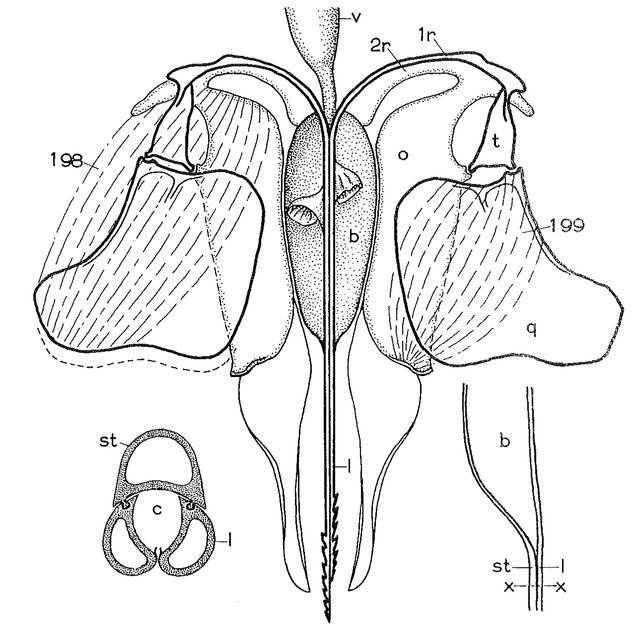For many people unfamiliar with beekeeping, the honey bee is often seen as a threat because of its sting. In reality, bees do not sting at every opportunity, and the sensation is often no worse than pricking a finger on a rose thorn or blackberry bush.
The sting of the honey bee is a remarkable piece of natural engineering. Compact yet highly efficient, it serves as an effective defence mechanism for the bee and its colony against predators.
Structure of the Sting
The honey bee’s abdomen is made up of ten segments. Of these, seven are visible. The first segment, known as A1 or the propodeum, connects to the thorax and is more accurately regarded as part of it. The rest of the abdomen, called the gaster, outwardly shows six segments, ending with A7. Hidden within the final segment are three additional internal segments.

In some related insects within the order Hymenoptera, segments A8 and A9 develop into an ovipositor, sometimes used for drilling into wood. The honey bee, however, has evolved these parts into its sting.
The Parts of the Sting
The sting apparatus rests inside the cavity of A7, known as the sting chamber. When not in use, the sting folds neatly inside this chamber. It is made up of three pairs of plates: oblong, quadrate, and triangular. Muscles attached to these plates drive the alternating movement of the two barbed lancets. This alternating action creates a subtle vibration that can be felt by the person being stung.
The oblong plates provide the rigid framework, while the triangular plates pivot like rockers, converting straight muscle pulls into curved movements. The lancets, driven by these mechanics, move in a semi-circular path that maximizes penetration efficiency.
The shaft of the sting is made of three interlocking parts: the two barbed lancets and a central dorsal stylet. Together, they form a canal through which venom flows. At the base, the structure enlarges into a bulb containing venom, aided by tiny umbrella valves that pump the liquid forward. The venom sac and associated glands connect to this bulb, supplying the sting during use.
Each structural component is extremely stiff, not because of material thickness but due to its tubular cross-section – much like how rolling a sheet of paper into a tube dramatically increases its rigidity.
The Action of Stinging
When a honey bee stings, it curves its abdomen downward. This movement is powered by muscles that pull the abdominal plates together, bending the abdomen. At the same time, the sting shaft pivots through the action of the furcula muscle, ensuring the sting enters the target’s skin at an efficient perpendicular angle. This orientation allows venom to reach deeper layers while requiring less effort to pierce the skin.
Once inserted, alternating movements of the barbed lancets drive the sting deeper. Venom is delivered in pulses, pushed along the central canal by the pumping action of the valves within the bulb. Unlike a hypodermic needle, the bee’s sting spreads venom across a broader tissue area as the lancets rub together, increasing the effectiveness of the defence.
Additionally, small amounts of venom leak from the exposed part of the shaft, carrying a pheromone that alerts other bees to join the defence.